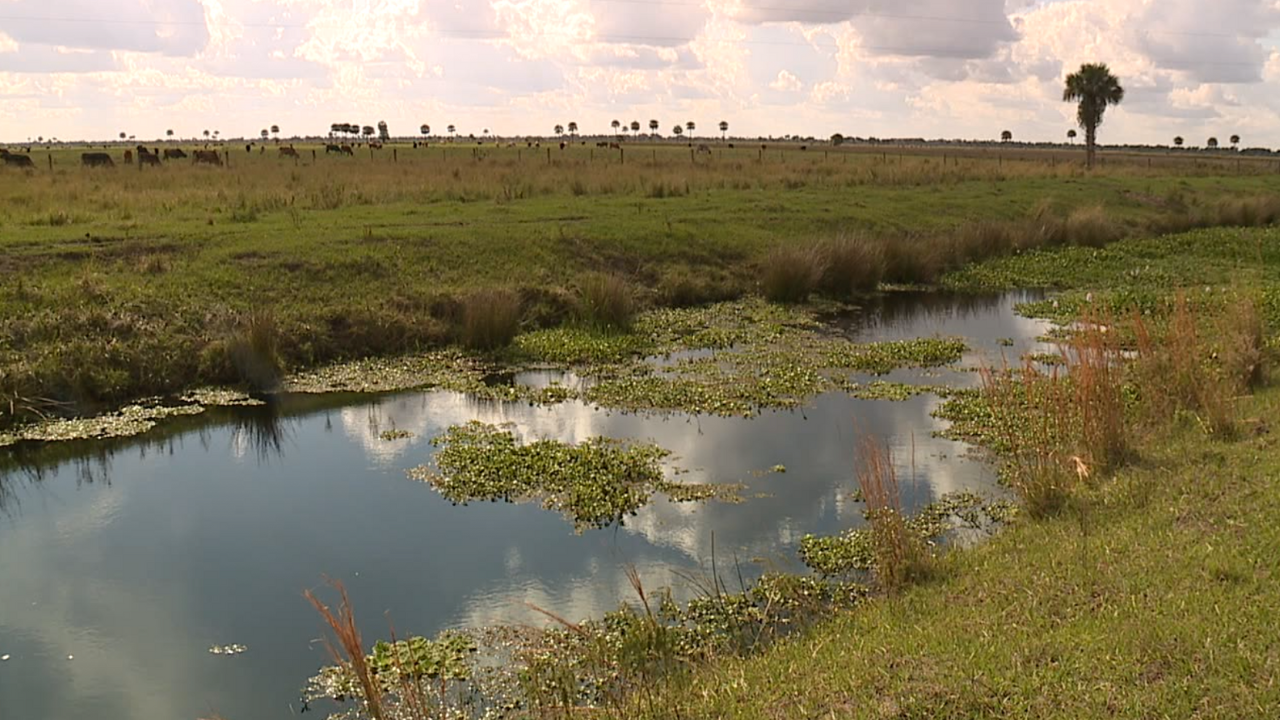HIGHLANDS COUNTY, Fla. — When most people think of Florida, images of the state’s beautiful beaches and Disney World likely pop into their minds, but ABC Action News wanted to highlight the work being done within the Florida Wildlife Corridor to preserve and protect the environment for generations to come.
The Florida Wildlife Corridor is nearly 18 million acres. More than half of it's protected, but millions of acres do not have conservation status. The corridor is made up of national parks, state forests, waterways and working lands like Buck Island Ranch in Highlands County.
ABC Action News Anchor Lauren St. Germain and photographer Allison Shaw traveled to the ranch to learn about the work being done to preserve and protect our environment for generations to come.
Gene Lollis is “just a cowboy” who is actually the ranch manager at Buck Islands Ranch.
“Favorite thing out here is open space. No cars, no horns, no sirens, just peaceful,” said Lollis.

At the ranch, we rode a swamp buggy around the working lands and passed hundreds of cows, wetlands and field experiments.
Dr. Hilary Swain is the Executive Director of Archbold Biological Station. Scientists there partner with cowboys at Buck Island Ranch to study agriculture, sustainability, and conservation. She explained one project at the ranch is all about slowing the rate at which water leaves the property.
“The culverts that we put in have a riser in them, so the ditch has to fill up and fill up and fill up to this level. Then it pours water down and into the pipe, so you’re holding a lot of water back. It’s called a riser culvert,” said Dr. Swain.
We drove deeper into the property to see the project in action.
“So you can see Hillary was talking about the riser structure. If you watch your step right there – if you look down right there, there is about a two-foot difference in elevation of water,” said Lollis. “The purpose of this was to look at what are the impacts to our operation but what are the downstream impacts that we can do on these large landscapes by holding up water.”
Lollis explained the primary focus of these structures.
“We are mostly concerned about phosphorus in the area. New phosphorus is a nutrient that causes algae blooms. So with algae, whether it be red or green, that phosphorus getting in the water column, getting to the coastland and producing those algae,” said Lollis.
There are now more than 100 riser culverts across the property. Now, nearly 20 other ranchers are doing similar work.
“Well, over a 15-year period, a lot more people are getting on board because we will all see the impacts we are having with water demand,” said Lollis.
About a 20-minute drive away is Archbold Biological Station. It’s right in the middle of the Florida Wildlife Corridor.
“Archbold has been here in Florida since 1941, and we are driving through some of the most precious places in North America right here in Florida. The wildlife corridor is a mixture of wildlife habitats like we are at Archbold, working land, forest, ranches and farms. It includes all the areas across Florida that contribute to protecting wildlife – helping to conserve our waterways in the long term. These are really important for resilience,” said Dr. Swain.
Dr. Swain explained why a vast connected network of land is so crucial for conservation – through the life of a gopher tortoise.
“A little connectivity goes a long way for some species – for a gopher tortoise cut off by three big roads – you are just going to end up with some sort of a population that is just going to live there for a few decades. But, it's going to eventually die out because they are not breeding – they do not have genetic diversity,” said Dr. Swain.
In 2021, the Florida Wildlife Corridor Act passed with bipartisan unanimous support. It secured hundreds of millions of dollars in funding to protect interconnected natural areas in the state. Since then, thousands of acres of land have been added to the protected list and also helping the animals that call the Florida Wildlife Corridor home, like the Florida Scrub Jay.
“A lot of species like scrub jays and gopher tortoises need connectivity from one patch to the next,” said Dr. Swain.
“You will see our neighbor with some scrubland, and you will see other neighbors to the north and west with some scrub lands. Some of which are connected to us, and others of which are not yet connected. That’s the long game of filling in the jigsaw of the Florida Wildlife Corridor,” said Dr. Swain.
You can learn more about Archbold Biological Station here, as well as Buck Island Ranch here.





